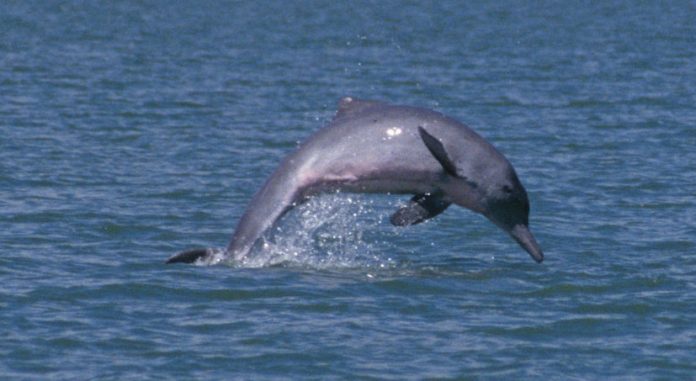Initial data from a monitoring project to help preserve two dolphin species has found almost 250 healthy individuals in stable populations near Townsville.
Led by Flinders University in collaboration with Southern Cross University and Blue Planet Marine, the project is studying the ecology of the dolphins in the Townsville region in relation to construction activities associated with the Port of Townsville’s $193m Channel Upgrade Project.
Project leader Flinders University Associate Professor Guido J Parra says a pre-construction ‘baseline’ survey was undertaken last year, providing important baseline data on the distribution, abundance and preferred habitats of snubfin and humpback dolphins under pre-construction conditions.
“Boat surveys in 2019 estimated the total number of snubfin dolphins using Cleveland Bay at 54 individuals and at 89 individuals for Halifax Bay. The total population size of humpback dolphins was estimated at 30 individuals for Cleveland Bay and at 71 individuals for Halifax Bay,’’ he said.
“Land based surveys of key areas where port construction activities will take place observed snubfin and humpback dolphins frequently throughout different times of the day engaged mainly in foraging and travelling behaviours.’’
Associate Professor Parra also found that the distribution and population estimates for snubfin and humpback dolphins was consistent with surveys undertaken 20 years-ago, indicating that populations have remained relatively stable over time. “It also shows that the coastal waters off Cleveland Bay and Halifax Bay continue to support important populations of Australian snubfin and humpback dolphins”.
“Furthermore, the frequent use by both dolphin species of the coastal waters close to the Port is consistent with surveys undertaken between 1999 and 2002, suggesting that the Port-related activities are not deterring inshore dolphin activity. Further surveys during and post construction activities will allow us to assess if there is any significant impact on the dolphin’s population status’’ he said.
“Importantly, the baseline assessment indicated that present levels of maintenance dredging and vessel traffic do not seem to influence the patterns of attendance and behaviour of dolphins around the port area.’’
Port of Townsville General Manager Infrastructure and Environment Marissa Wise said the monitoring work, which would help to ensure the long-term conservation of the dolphins, was an important element of the Channel Upgrade Project.
“The Port is investing $17 million on environmental monitoring and management solely associated with the Channel Upgrade Project to ensure minimal impacts on the mega-fauna, corals, bird-life and seagrasses in Cleveland Bay and the surrounding area,’’ she said.
“We are extremely mindful of the delicate balance within the waters in which we operate, so it is heartening to hear from independent environmental scientists that our dolphin population is healthy and remains unaffected by Port-related activities.’’
Member for Townsville Scott Stewart said the channel upgrade project was an important investment in Townsville’s future.
“The environmental work being done between the Port of Townsville and Flinders University is vital to ensure this project is done sustainably. The channel upgrade project will create much needed jobs during construction and allow more freight to come and leave the port which creates opportunities for many businesses.”
Member for Mundingburra Coralee O’Rourke said by continuing to manage the health response we can now focus on delivering Queensland’s plan for economic recovery.
“It’s activity like this that can help support Queensland’s plan for economic recovery as the world deals with the global coronavirus pandemic,” she said.
Member for Thuringowa Aaron Harper said environmental modelling was a key part of ensuring the channel upgrade was successful.
“This project needs to be done sustainability and this monitoring is a key part of this,” he said.
“Investments like this into the Port of Townsville will help provide important jobs in a sustainable way.”
The inshore dolphin research and monitoring program is being undertaken via a series of surveys across June and July each year over five years (2019-2023), and involves an integrated methodological approach using boat and land-based surveys. Three boats are used to survey for dolphins in coastal waters off Townsville and adjacent waters including Cleveland and Halifax Bays.
The Channel Upgrade Project is the largest infrastructure project in the Townsville Port’s history. It will allow larger ships safe access to the Townsville Port, ensuring the Port remains competitive benefits North Queensland’s economy for decades.
The Townsville Port Channel Upgrade is a joint project of the Queensland and Australian governments, and Port of Townsville Limited. The Channel Upgrade forms part of the Townsville City Deal signed in December 2016.















